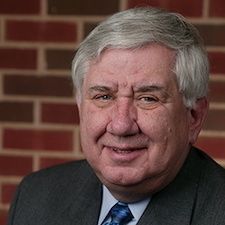Article
Campaign to Inform Low-Dose Aspirin Use for CVD Prevention Found Unsuccessful
Author(s):
The media campaign to improve aspirin use included billboards, radio ads and print articles, in addition to a dedicated website.
Russell V. Luepker, MD, MS

Media and clinic education programs aimed to improve guideline-based aspirin use for preventing cardiovascular disease (CVD) were not successful, according to new findings from a non-randomized controlled trial.
Investigators, led by Russell V. Luepker, MD, MS, Division of Epidemiology and Community Health, School of Public Health, University of Minnesota, conducted their trial between 2015 and 2020 to determine if community and clinic education interventions improve guideline-based aspirin use for the prevention of cardiovascular disease. The study authors noted that overuse as well as underuse of low-dose aspirin as a form of primary prevention of cardiovascular disease is common.
The investigators compared Minnesota, the intervention state, to 4 Upper Midwestern adjacent states that served as controls. Minnesota conducted a statewide campaign to distribute billboards, newspaper articles, and other print material, in addition to radio announcements, and the promotion of an Ask About Aspirin website, the study authors said. They also described how primary care clinics identified appropriate aspirin candidates and how those clinicians received continuing education about aspirin.
Investigators conducted 8,342 cross-sectional telephone surveys of men aged 45 - 79 years and women aged 55 - 79 years in 3 phases (baseline, plus 2- and 4-years post-intervention), they said. About half the participants continued through the study and their aspirin use was evaluated using a questionnaire, the study authors said.
Race was self-reported by the participants as mostly white (97%) compared to other races and ethnicities, the study authors reported. However, risk factors for cardiovascular disease – including hypertension, hyperlipidemia, diabetes, and smoking – were similar over the 3 surveys, after adjustments for age.
There were 58 billboards placed throughout Minnesota in the first 6 months of the intervention period, though most were changed at 3 months. Radio announcements were distributed to local stations and articles were distributed to local newspapers and health system newsletters, the study authors detailed.
More than 1 million visitors reached the Ask About Aspirin website, and about 53,000 completed the self-assessment for aspirin candidacy. Of those, about half completed the relevant questions and were advised to consult their physician regarding potential aspirin use. There is no data connecting website visits to physician follow-up due to privacy concerns, investigators noted.
About a quarter of the largest Minnesota health systems participated in the Ask About Aspirin program, which included a 1-credit continuing medical education module. In all, 378 physicians earned the credit, plus a group of 747 physician assistants, nurse practitioners, nurses, and other professionals with direct patient contact, the study authors said.
They additionally noted that google searches for low-dose aspirin benefits showed 7,000 news stories during the study period, in print and digital media.
Participants in Minnesota had reported awareness of the Ask About Aspirin media campaign around 4 to 6%, compared to 2 to 3% of surrounding states throughout the study period, the study authors found. At baseline and year 2 of the survey, the investigators observed that the media messages were predominantly favorable, but didn’t differ significantly between the intervention and control states.
By year 4, the study authors found the messages not in favor of aspirin use increased significantly and were more often seen or heard in Minnesota. Mixed messages (both positive and negative) increased between years 2 and 4 of the surveys in all states, the study authors said.
The study authors also found that trends in aspirin use discussions with clinicians reportedly increased, but not significantly in Minnesota.
“A 4-year multichannel campaign using professional education, clinic interventions, and analog and digital media did not appear to produce a population-wide improvement in appropriate aspirin use,” Luepker concluded.
The study, "Association of a Community Population and Clinic Education Intervention Program With Guideline-Based Aspirin Use for Primary Prevention of Cardiovascular Disease," was published in JAMA Network Open.





